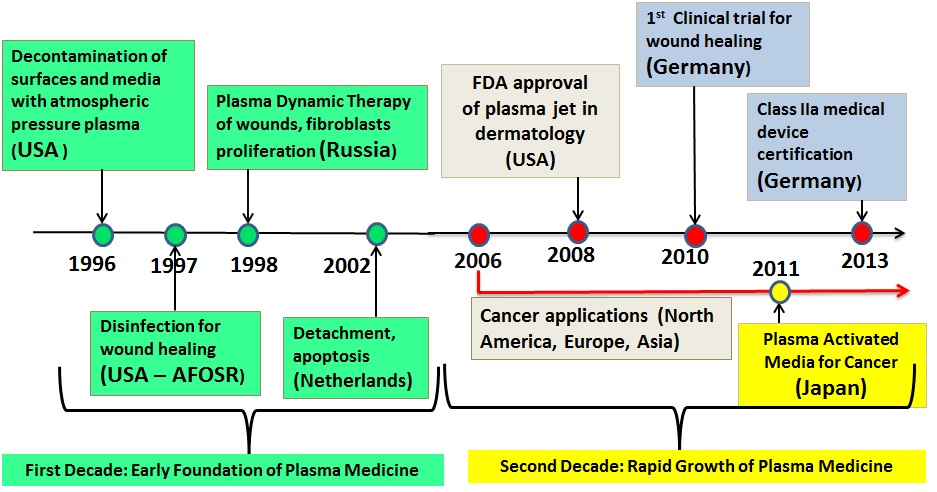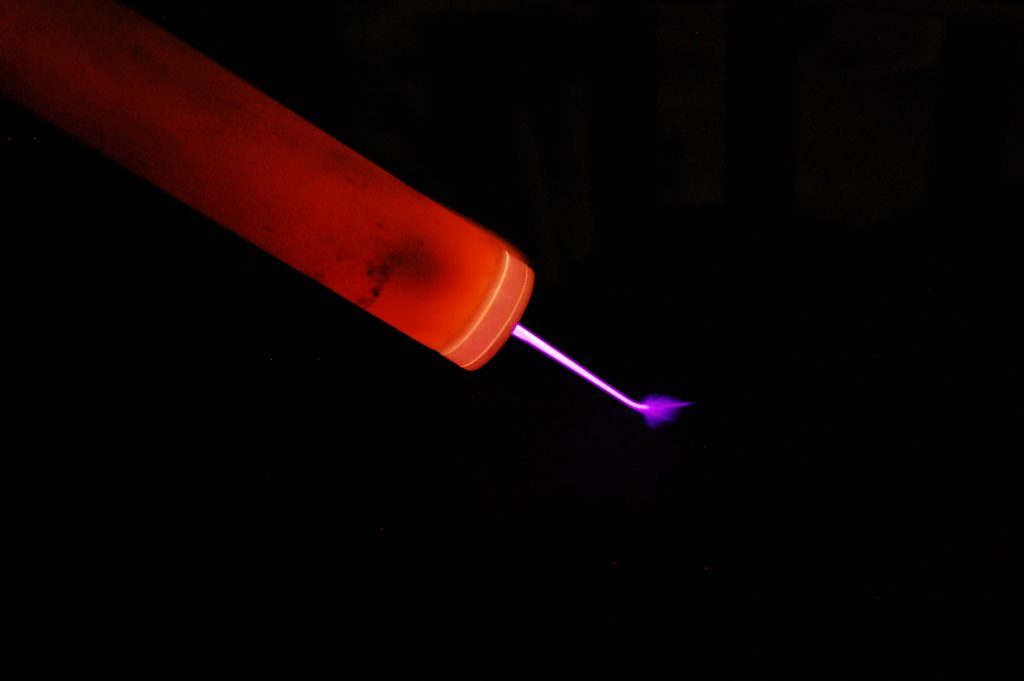Plasma Medicine
The biomedical applications of low temperature plasma (LTP) emerged in the mid-1990s when atmospheric pressure LTP was shown to have strong bactericidal effects. LTP devices were first used for the disinfection/ decontamination/sterilization of biotic and abiotic matter. One of the first applications was to disinfect wounds and to accelerate the wound healing process. Investigators have discovered that many of the biological effects of LTP are mediated by the reactive chemical species it produces. These species, which include ROS and RNS, cause various oxidation and nitration reactions and trigger biochemical pathways that can lead to cell proliferation or cell death (by apoptosis or necrosis) depending on the applied dose. Today LTP is used in various research endeavors aimed at developing therapies for the healing of chronic wounds, fighting cancer, curing dermatologic diseases, etc. The figure below shows a timeline of the development of the emerging field of plasma medicine.

The figure below is a photograph of the plasma pencil, one of the first “bio-tolerant” low temperature plasma jets developed specifically for biomedical applications


